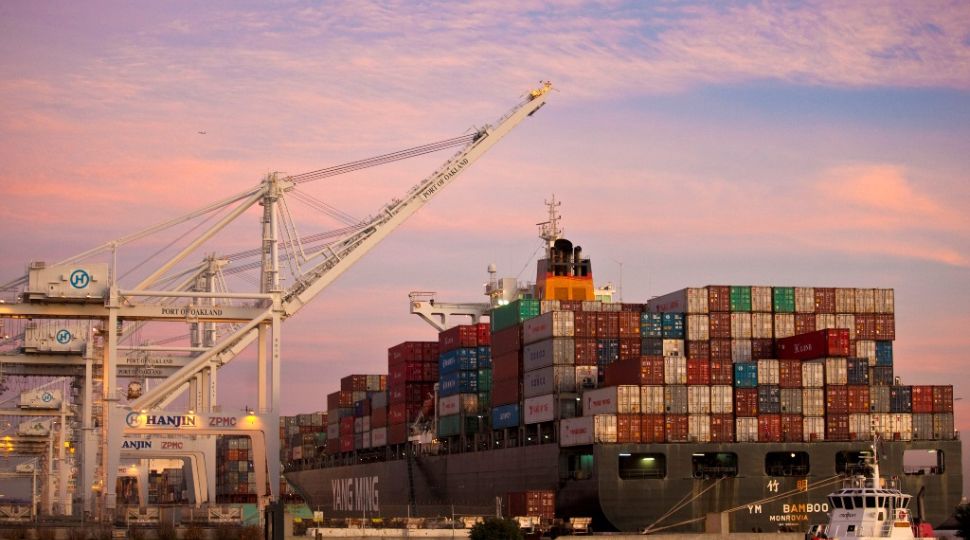
The first cases of SARS-CoV-2 infection were recorded in December 2019 in the Chinese city of Wuhan in Hubei province, which is an important production centre. By the end of January 2020, cases of Covid-19 (the disease caused by the infection) had spread throughout China and moved beyond its borders. In connection with the scale of the infections, on 11 March the World Health Organization (WHO) announced it had become a pandemic. According to WHO data from 13 March, in 123 countries and territories (including all EU members) there were more than 132,500 cases of infection and almost 5,000 deaths. The global scale of the pandemic means a greater impact on the world economy than similar cases in recent years—SARS (2002–2003) or MERS (2012–2013)—which were mainly confined to one region. According to OECD forecasts at the beginning of March, global GDP in 2020 may be 2.4%, which is 0.5 percentage point (p.p.) less than expected in November 2019, but in the pessimistic scenario, growth may fall to 1.5%.
Asian Markets and the EU
To prevent the spread of the infection in China, the authorities introduced some restrictions on socio-economic life. On 23 January, they established a blockade of Hubei and limited the movement of people in other parts of China. Other steps included closing factories and quarantining employees. The result has been a severe weakening of activity in the industrial and services sectors as well as a decrease in demand. OECD indicates that as a result of the pandemic, China's GDP growth in 2020 may amount to only 4.9% (0.8 p.p. less than the forecasts from the end of last year), the lowest in 30 years. China’s authorities have taken measures to support enterprises, including increasing access to cheap loans or exempting them from social security contributions, as well as promoting consumption (e.g., by introducing a temporary reduction in VAT). The slowing of the spread of reported cases of coronavirus in China since the beginning of March may be conducive to the return of economic activity by the end of the month, possibly returning to about 70% of the pre-pandemic status.
Other Asian countries also have had negative economic effects, mainly Japan and South Korea, linked to the Chinese economy and themselves the centres of outbreaks. They have seen factory closures and the disruption of value chains in sectors such as automotive and electronics. The OECD lowered GDP growth forecasts for both countries in 2020—in Japan’s case by 0.4 p.p. (to 0.2%), and for Korea by 0.3 p.p. (to 2%). Other countries in the region, including ASEAN members, will also be affected by the slowdown in China, such as lower exports of raw materials.
The effects of the pandemic in Asia can strongly affect manufacturing companies from large EU economies, including Germany, France, or Italy, which have factories in China, for example, or import components from there. Disruptions in their value chains can cause a drop in production, competitiveness, and market share. They will also suffer from a drop in demand—in 2019, China was Germany’s third-largest export market.
Situation in the EU. As a result of fears of infection, as well as the tightening of administrative measures (e.g., cancellation of mass events), EU citizens are limiting their activity, which reduces demand in some sectors, primarily services. The effects of the epidemic are already strongly felt in many sectors, including tourism, transport (including aviation, recently affected by the 30-day travel ban from Europe to the U.S.), gastronomy, entertainment, and trade fairs. There has been a temporary increase in the sales of staple goods, including food. However, purchases of capital and durable goods may be put off. Limiting demand may at the same time alleviate price increases caused by falling supply. Uncertainty as to the state of the global economy also has caused a deterioration in investor sentiment. At the beginning of March, stock exchanges in the EU, the U.S., Asia, and Australia fell by levels similar to the 2008 financial crisis.
According to OECD forecasts, GDP growth in the eurozone in 2020 may amount to 0.8%, which is 0.3 p.p. less than previously anticipated. The strongest decline will be felt by the third-largest EU economy, Italy, which may remain flat compared to the previous forecast of 0.4%. The country has the highest number of Covid-19 cases in the EU (over 15,000, of which more than 1,000 people have died). On 9 March, the Italian authorities quarantined the north of the country, which is a key industrial base and financial centre, and then on 10 March they restricted travel across all over Italy. The government has also introduced a financial package worth €25 billion to support Italian businesses. The suspension of production at Italian plants and delays in deliveries will negatively affect the condition of related companies from other countries, including Germany (e.g., car manufacturers) and France. All intra-EU trade will suffer, which will likely limit export-based Germany, the largest EU economy, to just a 0.3% increase in GDP in 2020 (0.1 p.p. lower than forecast) while France, the second-largest EU economy may drop to 0.9% (lower by 0.3 p.p.).
In response to the deteriorating situation, the EC announced the launch of a fund financed from the EU budget worth €37 billion to combat the effects of the pandemic. It also announced the introduction of mechanisms to facilitate economic stimulus, including the temporary loosening of fiscal rules or granting public aid. In addition, the European Central Bank (ECB) has, among others, extended the bond purchase programme, including corporate bonds, by €120 billion to boost the liquidity of companies in the EU.
Diagnosis for the Polish Economy
The decrease in consumer demand in China and other Asian countries should not directly affect exports from Poland, as their share in total foreign trade is small. However, the negative impact of limiting or delaying the supply of components from Asia to Poland (at least 30% of imports from China) is possible. Above all, however, Polish companies may suffer as a result of lower domestic consumption and weaker economic activity and demand in other EU countries. This applies mainly to Germany and Italy, respectively the first- and fifth-largest Polish export partners. The likely decrease in exports of companies from these countries to China may affect their Polish suppliers.
A prolonged pandemic may result in a slowdown in Poland’s GDP growth in 2020. According to the Ministry of Development, the pandemic may reduce it by 0.5–1.3 p.p. to 2.4–3.2% (the budget for 2020 stipulates 3.7% growth). Some financial institutions point to a greater slowdown—even to 1.6%.
Perspectives
The scale of loss associated with the pandemic will depend primarily on its duration. The longer the pandemic creates uncertainty, the more likely the slowdown in the global economy recorded since 2018, including in the EU, will be locked in or even lead to recession.
Until the pandemic is under control, it will be important for EU countries, including Poland, to introduce flexible fiscal stimulus packages, including tax breaks and public investments. These will support enterprises and thus prevent further negative outcomes, such as a reduction of employment. The actions of countries with budget surpluses, mainly Germany, may be particularly important. Also, central banks, including the ECB, may lower interest rates, although they are already at low levels in the euro area and elsewhere so the impact of such measures may be limited. It is also possible to further increase the bond purchase programme. These actions should be taken carefully and in consultation with other entities (e.g., the G20) so as not to cause panic on markets.
The pandemic may also encourage EU companies to increase diversification within global value chains so as not to concentrate too much production in one country or region. This would strengthen the previous trend of moving production from China to other places because of rising labour costs and the trade dispute with the U.S. Also, the likelihood of future pandemic outbreaks may prompt EU countries to prepare special financial instruments such as larger reserves in Union and Member State budgets.







